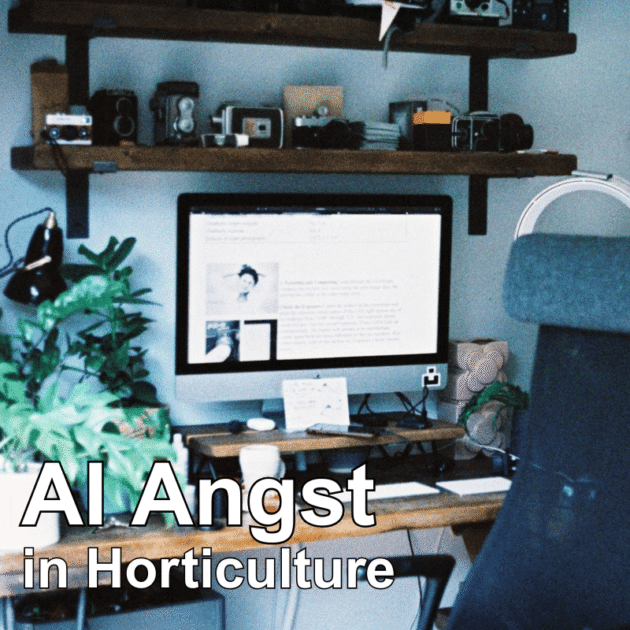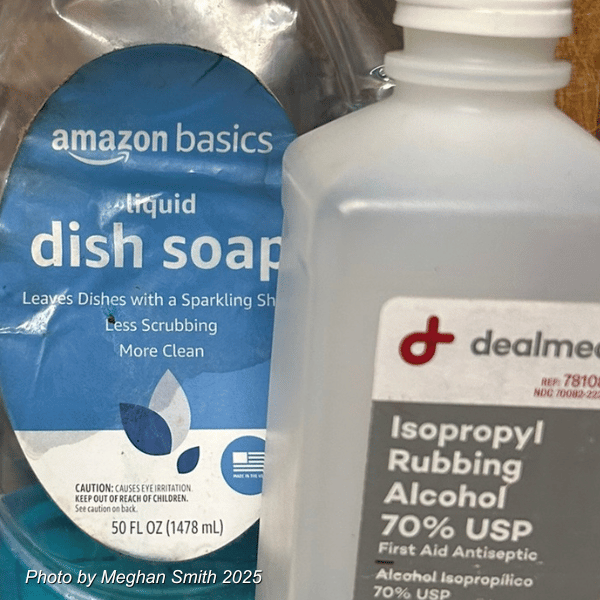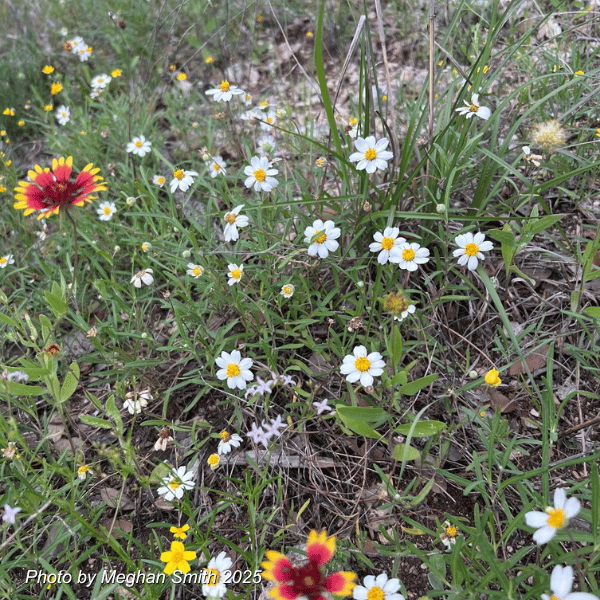June 26, 2025

photo https://unsplash.com/@anniespratt
OP-ED by HCWG Horticulturist and Garden Writer Meghan Smith
Please don’t ask AI. Just ask us.
More and more customers have been sending us pictures of dead/dying plants or bringing in burned leaves after asking AI how to solve a plant problem.
Please. Save a plant. Ask us instead!
Torn leaves? Insect damage? Little webs? Funny spots? Don’t worry. We’ve got you. Bag up some leaves and bring them in. We’ll look at them under a microscope, diagnose the problem, and provide solutions that will save you money and grief. Literal grief, because the bad advice that AI is giving people is killing their plants.
Can’t make it in? Take a few pictures and text them to us:
512-560-6788

Photo: Accurate plant identification from a photo can be difficult. See Problem number 1!
How To: Learn About Plants When Google Might Lie to You
Gardening in Central Texas has never been easy. The soil is thin and rocky. The rain is absent or torrential. Sometimes the freezes are catastrophic. Summers are insufferable. But a new challenge has reared its head in the last few months.
It’s a handy new feature that you can’t escape. Just type your search terms into your browser, and AI will provide an “overview” or “summary” that looks and sounds like an answer.
Grab a beverage. Pull up a chair. Let me tell you some terrible true stories of AI advice gone wrong.
Problem number 1: AI identification tools struggle with scale.
Take a picture of a leaf with your phone. Now hand the picture to a friend. Ask them to guess how big the leaf is. Unless you included a coin for scale, your friend probably won’t be able to tell you, and neither can AI.
If you’re just trying to identify a plant, this is annoying but amusing: your phone might tell you that the dramatically cut leaf margins on the plant you’re looking at are an Engelmann’s daisy (whose leaves are about six inches long). But it’s a cardoon, and the leaves are the size of your torso!
If you’re trying to identify the cause of leaf damage, it’s difficult for a picture to show whether large leaves have big tears, small leaves have little nibbles, or medium leaves have large bites. It’s also difficult for pictures to show the details of the damage: burned looking leaf margins, tiny webs and frass (that’s a technical term for bug poop), and almost-microscopic thrips are going to be difficult for plant apps to reliably identify because cameras will struggle to pick them up.

Photo: Bee "damage" caused by a very important benifical insect!
Problem number 2: AI doesn’t live in Central Texas.
For the past few weeks, the vast majority of potentially pest-damaged leaves that customers have brought in have actually been ripped up by hail, not chewed up by bugs. As a human person living in Central Texas, I both experienced the hail event and got to look at the damage it caused to leaves in my own garden and here at the nursery.
AI does not remember that it hailed here three weeks ago, so if you ask it what is eating your leaves, it’s going to make up an answer based on the false premise that something is eating leaves. The answer it gives is going to be irrelevant to the actual plant that you are looking at.
Similarly, if you ask advice from AI on how to garden, its answer is going to draw statistically on general gardening articles, not articles written specifically for central Texas. Central Texas is really special! Our unique limestone-based soil ecology is home to more than a quarter of Texas’s 400 endemic plant species. It takes really special plants and specialized knowledge to garden here well. Your best bet is always to look for advice from Central Texas-specific resources (which I’ll discuss in more detail later) or ask your friendly local nursery specialist.

Photo: These common household products are not for plants!
Problem number 3: AI lies.
Saying that AI lies sounds dramatic: AI doesn’t have agency. It isn’t trying to kill your plants.
But, to briefly get a little bit technical, AI overviews use generative AI. Large Language Models, or LLMs, generate answers by statistically analyzing search results and predicting the next most likely word in a sequence. This leaves them prone to “AI hallucinations,” or, more simply put, making things up. And while Google’s AI overview probably also uses “retrieval-augmented generation (RAG),” which allows it to cite its sources, it is still likely to summarize those sources incorrectly. This means that both the quality of the sources it references and the quality of the summary itself might be incorrect. You can learn more about this here.
Whatever the cause, allow me to briefly relate just a few of the mistakes made by friends, family members, and customers on AI’s advice:
• Spray plant leaves with a vinegar solution to kill aphids and other pests. We actually spray vinegar on leaves to kill leaves. Vinegar + leaves + sunshine = burned foliage. It’s a great way to kill weeds occurring in pathways mulched with rock or decomposed granite, but not recommended for any kind of insect pest (due to the potential to burn leaves).
• Spot treat by spraying leaves with 70% isopropyl alcohol to kill mealybugs, spidermites, and aphids. Anywhere the alcohol directly touches plant leaves, the cell walls will burst and the plant will blacken and die.
• Dunk the entire plant in isopropyl alcohol to kill pests. This is a very efficient way to cause an entire plant to blacken and die.
The grain of truth behind these alcohol treatments is that one way to manually remove mealybugs is to soak a Q-tip in alcohol and use it to wipe the bugs off, which helps break through the waxy cuticle that protects them from less labor-intensive pest removal methods. Why the articles recommend using rubbing alcohol for spidermites or aphids, which can be removed with a harsh jet of water, I simply cannot fathom.

Photo: Blackfoot Daisies in their natural habitat.
How To Learn New Things in this Brave New World
Learning something new by googling has never been easy. The best way to learn something new has always been to find reliable, authoritative resources and then to get your hands in the dirt and learn from experience. Ideally, you also have access to a community of knowledgeable mentors.
Here are some of our favorite places to learn more about plants and how to troubleshoot when things go wrong.
• The Lady Bird Johnson Wildflower Center: Whether I’m accumulating plant lists for difficult areas in my yard or wanting to learn more about how to care for a native plant, this is always my first stop. Some of our favorite features include Plant Lists and Collections, the Native Plant Finder, and the numerous educational articles written for the Center’s quarterly magazine.
• Orchard People: Search the enormous backlog of articles and podcasts for information on fruit tree pruning, holistic and organic pest prevention, how fruit trees work, and special varieties. Not Central Texas specific, but a great resource on growing fruit.
• House Plant Journal: Darryl Cheng provides easy-to-understand, science-based, and realistic advice for houseplant parents. He also has helpful charts showing precisely how much light houseplants actually need, which is the best way to ensure that they thrive.
• Missouri Botanical Garden: A reliable resource for learning the best conditions for a wide variety of plants, including non-natives.
• Central Texas Gardener: This long-running, Central Texas-specific PBS show has both inspirational garden tours and interviews with experts in local ecology and entomology. Try looking at past Question of the Week features to find issues you might be facing in your garden.
• iNaturalist: The best way to learn to identify plants is to go for lots of walks–in the woods, in prairies, in botanical gardens–with a knowledgeable friend or guide and learn to look really, really closely at plants. The second-best way to get better at plant identification is to go for lots of walks and use iNaturalist. You upload a picture, it suggests a few potential matches, and then you can search for the potential matches to see if they look like what’s in front of you. Then, after you upload your observation, other members of the community–often actual entomologists and botanists–come in and confirm your ID. If you’d rather use a more straightforward plant ID app, Seek by iNaturalist is the best of the bunch (although still not infallible).
• Your Favorite Nursery Specialists right here at HCWG! Yeah, that’s right. I’m telling you to ask us again. You can take lots of pictures and show us, bring a sealed bag of leaves and bugs, send pictures to the nursery phone (that’s 512-560-6788), or read our backlog of educational articles or catalogue of popular plants if you’re looking for solutions.
That just scratches the surface of my personal favorite resources. I haven’t even shared my favorite books with y’all. Let us know if you want an article about what’s on our bookshelves.

You must be logged in to post a comment.